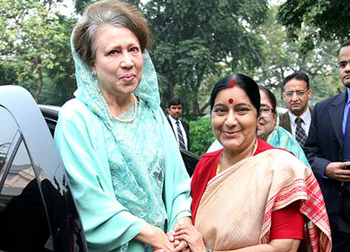Beijing, Apr 17: China denied Friday it had covered up the extent of its coronavirus outbreak, as it responded to growing questions from Western powers led by the United States.
A foreign ministry spokesman acknowledged that the virus's rapid spread had contributed to undercounting that resulted in China raising its death toll earlier Friday, but he added "there has never been any concealment, and we'll never allow any concealment."
The allegations China is too close to the World Health Organization (WHO), were an attempt at "smearing" Beijing, Zhao said.
US President Donald Trump has questioned China's handling of the pandemic and whether it had been completely transparent since the virus emerged in the central city of Wuhan late last year.
On Thursday, British Foreign Secretary Dominic Raab and French President Emmanuel Macron also expressed doubts about China's virus response.
These doubts were spotlighted again on Friday when authorities in Wuhan, which has borne the brunt of Chinese deaths, abruptly raised its death toll by 50 percent -- or 1,290 deaths -- to a new total of 3,869.
That also pushed the nationwide death toll up sharply to 4,632, based on official national data released earlier in the day.
Wuhan authorities cited several reasons for the missed cases, including that the city's medical staff were overwhelmed in the early days as infections climbed, leading to "late reporting, omissions or mis-reporting".
Zhao said such miscounting was to be expected in the initial stages of a major disease outbreak.
US President Donald Trump -- under fire himself for initially denying the seriousness of the pandemic -- has accused the WHO of doing the same and being too trusting of China's assurances over the outbreak.
On Tuesday he announced a suspension of US funding to the world body.
Asked about the US allegations, Zhao defended the WHO and China.
"I think they are all smearing China and cooking up stories about China," he said, without specifying which countries he was referring to.
China has largely brought the contagion under control domestically via tough measures including the unprecedented lockdown of Wuhan and tens of millions of people in surrounding areas, but not before it spread worldwide.
 Dhaka, Jun 27: External Affairs Minister Sushma Swaraj today held a meeting here with former Bangladesh Prime Minister and chairperson of Bangladesh Nationalist Party (BNP) Khaleda Zia.
Dhaka, Jun 27: External Affairs Minister Sushma Swaraj today held a meeting here with former Bangladesh Prime Minister and chairperson of Bangladesh Nationalist Party (BNP) Khaleda Zia.



Comments
Add new comment